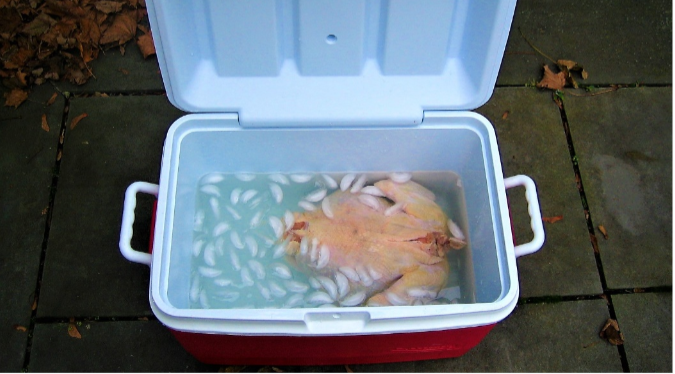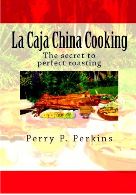Recent Posts
- Home
- Latin Touch
- Brining vs. Injecting
Brining vs. Injecting
Posted by on

Brining vs. Injecting
~Chef Perry Perkins~
Brine, because of the salt content, will give greater flavor than a marinade, the salts open the proteins in the meat and they absorb more moisture, so brined meat will be juicier after cooking. (And more forgiving to over-cooking!)
Personally, I think that pork benefits best from both marinating and brining.
Think of it as two separate techniques; the injection moistens and flavors the deep muscle tissue, while the marinade adds flavor to the exterior of the meat, and to the skin.
For a La Caja China whole pig, I’ll typically do a “dry marinade” ie: a thick spice paste, or a dry rub, because I don’t want to saturate the skin of the pig, which makes it harder to crisp.

Meats that improve with a good brine:
- Chicken & turkey (whole or cut)
- Rabbit (or any non-red game meat)
- Pork (especially boneless picnic ribs)
- Smoked Salmon/Fish
Fatty meats like beef and lamb are generally not improved by brining.
My basic brine = 1 cup coarse Kosher or sea salt + 1 cup sugar (white or brown) + 1 gallon purified water.
Bring water to a high simmer, add salt and sugar to dissolve, and allow to cool to room temp before adding the meat. You can increase or decrease the amount of brine, as long as you have enough to completely submerse the meat, by modifying the brine ingredients in these proportions.
My favorite injection is Cuban Mojo (moe-hoe), that I learned from my friend Roberto over at La Caja China:
Traditional Cuban Mojo
This classic Cuban seasoning sauce makes a flavorful marinade for meats and poultry. Traditionally this is made with sour oranges, cumin, lots of garlic. With larger cuts (pork shoulder, or whole pig & lamb) it can be injected into the meat 12-24 hours before cooking.
1 C sour orange juice
1 Tbs bay leaves
1 tsp cumin
4 oz of water
1 Tbs oregano
1 garlic bulb
3 tsp salt
Peel and mash the garlic cloves. Mix all the ingredients and let it sit for a minimum of one hour. Blend all ingredients and let it sit for a minimum of one hour, strain and inject, or place meat in a cooler and pour marinade to cover overnight.
You can replace the sour orange juice with the following mix: 6 oz. orange juice, 2 oz. lemon juice.
I use this recipe for my all-time favorite appetizer as well, Mojo Shrimp Skewers. Mojo is also a traditional dipping sauce for Cuban Tostones (twice-fried plantain round) - which are freakin' awesome.
To make this mojo into a marinade, add the above recipe to 1 ½ gallons of water, and 13 oz. of table salt.
How to inject:
Put your pork shoulder in a pan or baking dish, fill your syringe, and inject in 4-6 spots.
Pick a spot, stick the needle deep into the meat, and slowly depress the plunger while pulling the needle out, this allows the meat to close behind the needle.
Refill and repeat 4 times in various spots, until you've used 1/2 of the injection. The pork won't hold all of the solution, so it's okay for some of it to run out.
Flip the shoulder and repeat, then set the butt aside. Repeat the process with the second pork butt.
After injecting, sprinkle the rub generously on all sides, and "rub" it in to help it stick to the meat. Cover meat and refrigerate 24 hours, allowing to come to room temp before cooking.
~Chef Perry

As a third-generation chef, Perry P. Perkins focuses his love of cooking on barbeque, traditional southern fare, and fresh Northwest cuisine.
Perry runs the non-profit organization, MY KITCHEN Outreach Program, which teaches nutrition, shopping, and hands on cooking classes for at risk youth.
His cookbooks include La Caja China Cooking, La Caja China World, La Caja China Party, and the NEW “La Caja China Grill.”
You can follow the rest of Chef Perry’s cooking adventures at ChefPerryPerkins.com
 Loading... Please wait...
Loading... Please wait...
